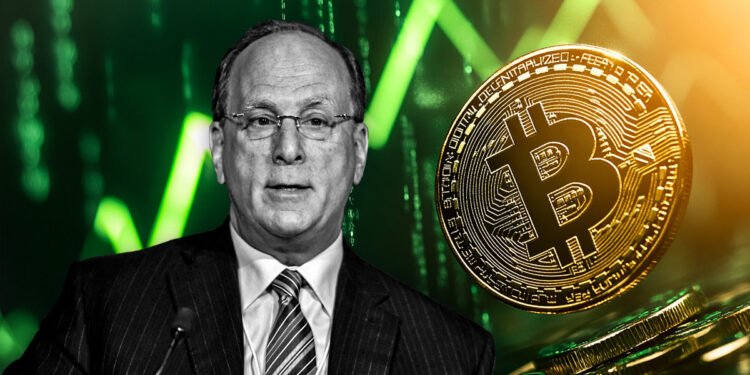Predicting Bitcoin’s Ascendancy: Larry Fink’s Perspective
During a recent dialogue at the World Economic Forum, BlackRock’s CEO Larry Fink offered a bold forecast, suggesting that Bitcoin (BTC) could potentially surge to an impressive $700,000. This anticipated rise is attributed to the escalating global economic and political instability, which might trigger widespread adoption of Bitcoin as a secure asset. Fink’s remarks highlight the increasing acknowledgment of Bitcoin’s significance in safeguarding wealth during turbulent periods.
Fink, a significant figure in the financial realm, reiterated his belief in Bitcoin as an “internationally grounded tool” capable of shielding assets from currency devaluation and economic upheaval. He proposed that if individuals in countries facing political and economic uncertainties turn to Bitcoin to preserve their purchasing power, an unparalleled surge could ensue. His insights provide a nuanced outlook on the embrace of Bitcoin by institutional investors, signaling a trend where major financial entities are actively exploring cryptocurrency allocations.
As per Fink, dialogues with BlackRock’s clients, including sovereign wealth funds, often involve talks on potential cryptocurrency allotments, with considerations of 2% to 5% allocations on the table. He clarified, however, that his statements do not serve as an endorsement for Bitcoin investment but rather reflect the shifting perspectives of institutional investors.
Market Outlook: Transition Towards Cryptocurrency
A recent report from BlackRock indicates that Bitcoin’s adoption is advancing at a faster pace compared to previous technological breakthroughs like the internet and mobile technology. The report identifies various factors propelling Bitcoin’s expansion, including inflationary pressures, geopolitical uncertainties, and mounting skepticism towards traditional banking systems. Additionally, BlackRock has significantly boosted its investment in Bitcoin, amplifying its acquisition of IBIT shares by 117% in the last quarter to a total of 430,770 shares. As the issuer of the largest spot Bitcoin exchange-traded fund (ETF), IBIT has amassed over $39 billion in net positive flows as of January 21, emerging as the most successful ETF of the decade.
Brian Armstrong, CEO of Coinbase, echoed the rising interest in Bitcoin among sovereign nations. He referenced conversations with several finance ministers contemplating the formation of strategic Bitcoin reserves if the U.S. embraces similar measures. Armstrong believes this sovereign intrigue could propel Bitcoin’s value into the “multiple millions price range,” contingent on Bitcoin evolving into a new gold standard embraced by global investors.
Assessing Impact: Ramifications for Bitcoin’s Future
The potential upsurge in Bitcoin’s value, as discussed by Fink, could have significant implications not only for investors but for the broader financial sector. As institutional bodies acknowledge the cryptocurrency as a viable asset class, Bitcoin might cement its position as a means for wealth preservation in crises, potentially displacing traditional safe-haven assets like gold. Furthermore, the increased Bitcoin allocation from major investment funds could trigger a self-reinforcing cycle of demand, further driving its price upward.
Moreover, the contemplation of Bitcoin reserves by sovereign nations hints at a notable shift in how national economies view cryptocurrencies. Should Bitcoin garner widespread acceptance, it could instigate substantial changes in market dynamics and financial strategies globally.
Wrap-Up: Bitcoin’s Trajectory Amid Global Turmoil
Larry Fink’s observations on Bitcoin reflect a growing trend among institutional investors who increasingly perceive cryptocurrency as a strategic asset amid economic and political uncertainties. His projections underscore the potential for Bitcoin to achieve an extraordinary valuation, propelled by enhanced adoption and the quest for financial security. As conventional investments face challenges, Bitcoin’s transformative potential in the financial landscape becomes more evident, inviting both scrutiny and optimism from market participants.








